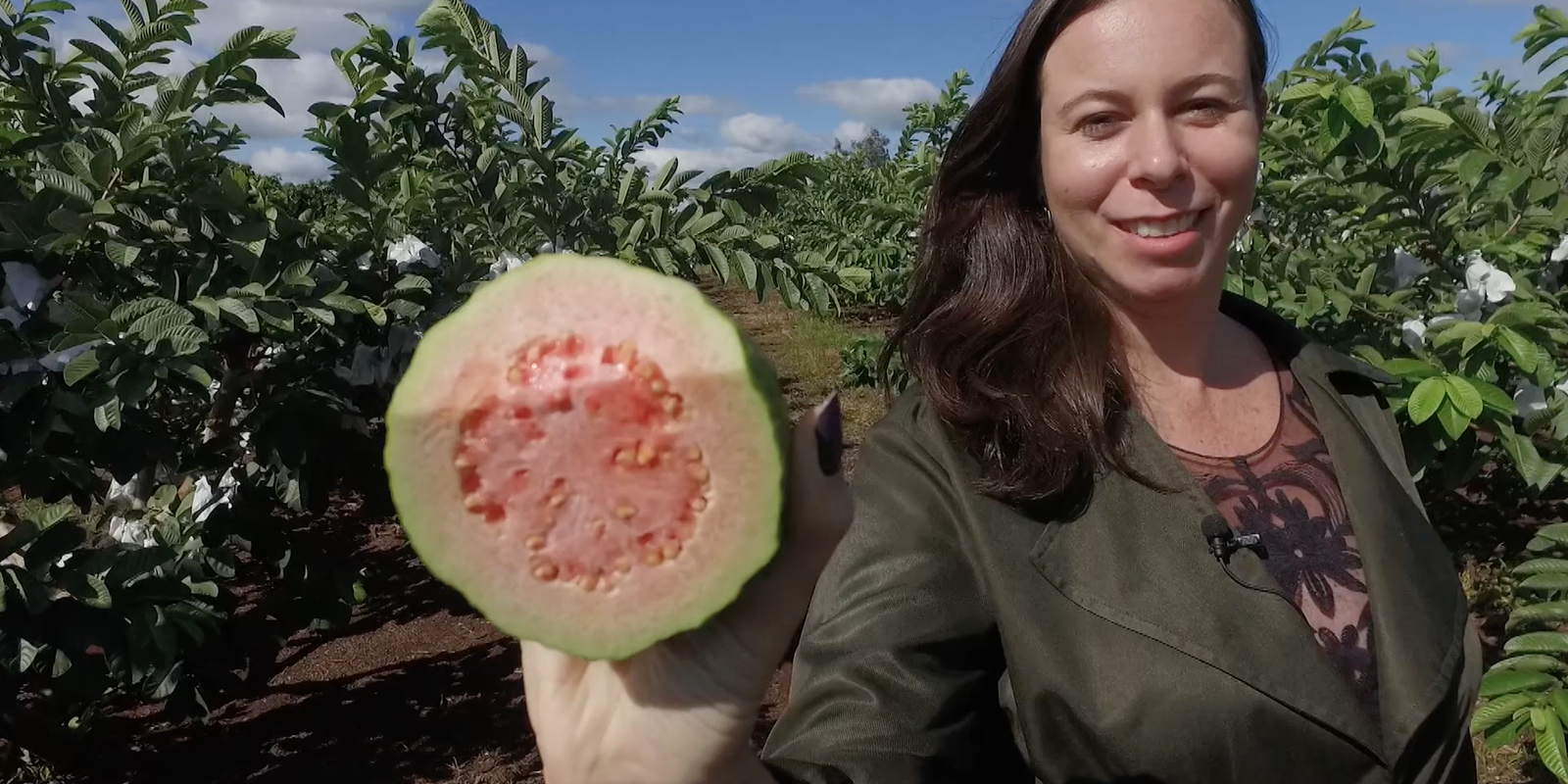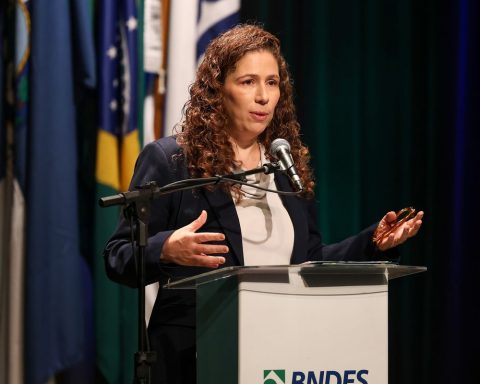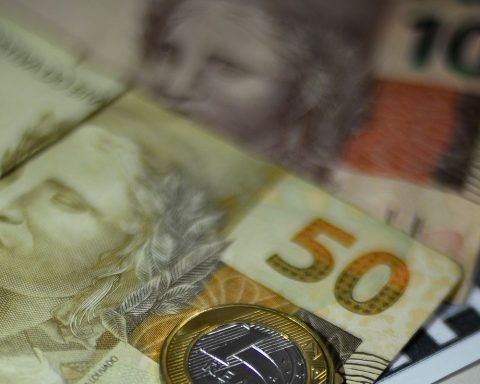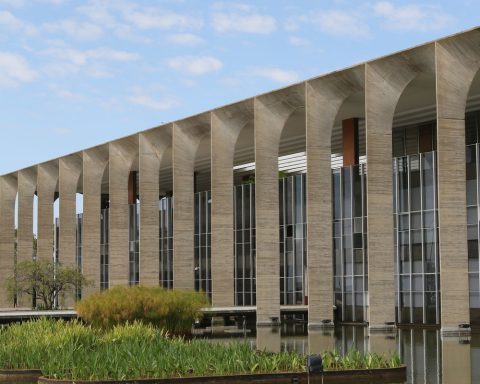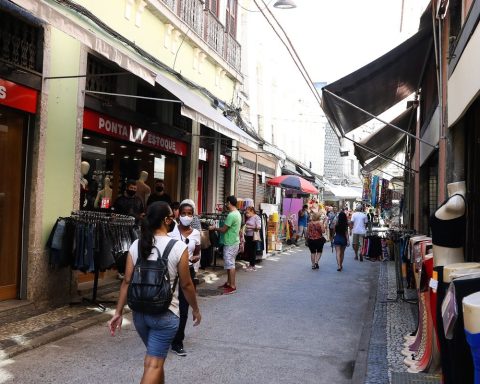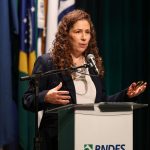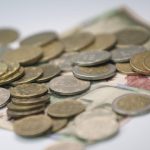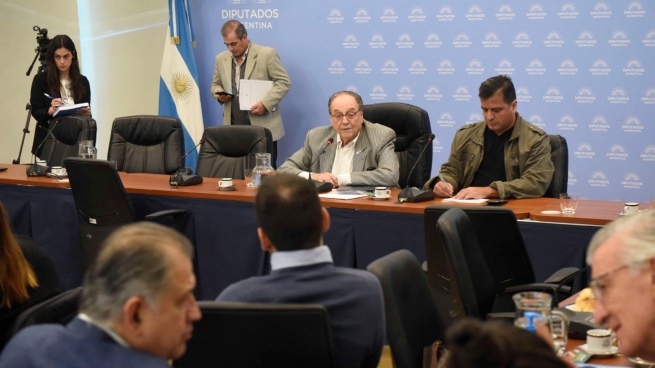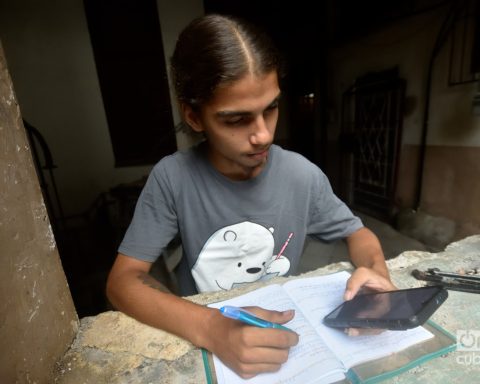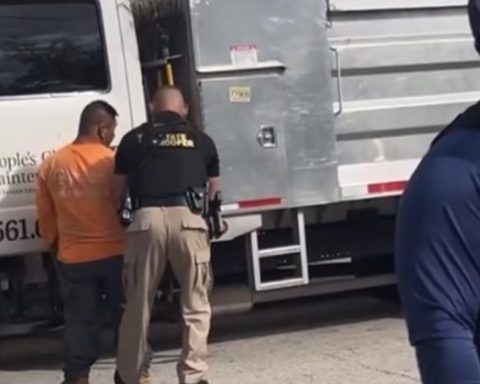Produced in a region with good tourist potential, guava from Carlópolis (PR) is large, crunchy, tasty and resistant. In 2016, it won the Geographical Indication (IG) seal, granted to products recognized for their tradition and quality, which makes them unique in the world. The GI of Carlópolis attests to guava from two municipalities in Paraná: Carlópolis and Ribeirão Claro. Today, 36 fruit growers are associated with Cooperativa Agroindustrial de Carlópolis and ten of them already have the IG seal.
The visibility and notoriety achieved with the Geographical Indication and also with the Global GAP (Good Agriculture Practices) certification, obtained in 2019 and essential for the foreign market, boosted the guava numbers. Within the country, sales grew 50% in two years, when comparing the first half of 2022 to the first half of 2020. The biggest highlight was abroad, as exports grew 1142%, a jump of 5.2 tons from January to June 2020 to 65.2 tonnes in the same period this year. England, Portugal, Canada and the Middle East are the main destinations.
The sales manager of Cooperativa Agroindustrial de Carlópolis and also a certified guava producer, Inês Sasaki, has participated in international fairs. “I went to Spain. And we took our guava. Everyone was amazed at the quality we have”, she is proud.
Differentials
Inês explains that the reduction of pesticides was essential to be able to export the product. “Every year, we do a laboratory test with the fruits, to see if there is no residue and also the water to see if it is not contaminated”. The positive result was only possible with the bagging technique, to avoid the guava fly. “From the moment we bag it, we don’t spend anything else, it stays bagged without pesticides for around 60 days. So, we do all this work, it’s manual, it’s difficult, but it’s a safety both for the producer and for the consumer”, evaluates Inês.
In addition, other factors that differentiate guava from Carlópolis are the thickness of the peel and the size of the fruit. According to certified producer Rodrigo Viana, the crunchiness of the product comes from the thicker shell that allows, among other things, longer transport time, better marketing, more space on the market shelf and more resistance. Rodrigo adds that the variety of guava grown in this GI can weigh an average of 500 grams or more and that, due to its size, it is considered a ‘table’ guava.
The tradition of guava in Carlópolis dates back to the 1970s. The pioneer was Iwao Yamamoto, who arrived as a child in the city of Paraná in 1949, along with other Japanese immigrants. Rodrigo explains, however, that the current guava is red and that at the time of Iwao was white.
“He made a cross and gave a different guava, it was a white guava, and he named it Iwao guava. So, it all started there, this Iwao guava remained until the end of the 1990s, when it was already giving way to this red one”, recalls Rodrigo, who graduated in agronomy, was a researcher in Londrina and decided to return to Carlópolis to double the amount of guavas produced by his father since the 1980s.
Reduction of the rural exodus
The president of Sebrae, Carlos Melles, emphasizes that the basis of the Geographical Indication is to establish the family in the countryside and value the development of family work. And this has really happened in places with IG label products.
This is the case of producers Inês Sasaki and Leiko Kawasaki. Both are of Japanese descent, went to live in Japan for a while, but returned to plant guava, with the prospect of foreign trade. “I stayed at a Honda car parts factory. My work there was wonderful. I stayed for 14 years, I bought this property, I came back, so I’m here trying to work, raise my children”, says Leiko.
The great interest in exports is justified by the fact that the foreign market stipulates a fixed price for the fruit that is higher than the domestic market, which, moreover, fluctuates over the months.
“In January and February the price within Brazil was around R$2, in March it dropped to R$1, in April R$1.50, from May the price improved and fluctuated between R$2 and R$ 3, until in August it reached R$ 4.50; while abroad it was sold for R$ 4, from January to August, without any variation”, explains the sales manager of Cooperativa Agroindustrial de Carlópolis, Inês Sasaki.
Sebrae
“Guava arrives well in Europe, people really liked the guava proposal there, which is considered an exotic product”, emphasizes Sebrae Paraná consultant Odemir Capello.
The Brazilian Support Service for Micro and Small Enterprises (Sebrae) – both national and state – has helped to map and implement Geographical Indications throughout Brazil. Currently, 92 are duly recognized by the National Institute of Industrial Property (INPI).
The innovation analyst at Sebrae Nacional, Hulda Giesbrecht, explains that 69 are of the indication of origin modality, which is registered based on the region’s reputation for producing a certain product, and 23 are of the denomination of origin modality, in which there is proof by scientific technical study of the characteristics and qualities of the product with the natural and human factors of the region. In the case of GI Carlópolis, guava is an Indication of Origin.
Geographical Indications were recognized from the industrial property law in 1996. “You gather all the information of traditional knowledge of the production of a product, the entire production history and this is documented and taken to the INPI, which recognizes this record. From there, producers who are installed in this demarcated area and who produce according to what is defined in the product’s technical specification book have the right to use the seal of the Geographical Indication”, says Hulda.
According to the director of Brand, Industrial Designs and Geographical Indications at INPI, Felipe Augusto de Oliveira, IG is the most sophisticated intellectual property asset that exists. “It allows the product to have a competitive differential, mainly in relation to the premium value that can be placed in this product on the market – that is, we have a tendency to increase, from the moment the product receives a Geographical Indication, around from 20 to 50%.”
gastronomy and tourism
The region called pioneer north of Paraná, which includes Carlópolis and Ribeirão Claro, has the GI of guava and also the GI of coffee, in addition to a dam with natural landscapes that impress visitors. In December 2019, it was established by law as a Special Area of Tourist Interest and officially called Angra Doce, compared to the beauty of the maritime Angra dos Reis (RJ). Angra Doce, in turn, comprises the reservoir of the Chavantes Hydroelectric Power Plant and its surroundings, in the states of Paraná and São Paulo.
One of the places that offer leisure, adventure and contemplation activities is Estancia Pedra do Índio, in Ribeirão Claro. The administrative manager of the Estância, Edilaine Faganelli Hernan, describes the landscape: “there are several islands, it is very mountainous, which makes it more beautiful and more similar to Angra dos Reis”.
The Estancia also offers paragliding and the longest zip-line in Paraná, one kilometer long and 128 meters high. The Pedra do Índio, which gives the resort its name, is a stone shaped like an Indian’s face and was carved by natural events over the years.
Sebrae Paraná consultant Odemir Capello highlights the relationship between Geographical Indications and tourism. “The GI route, we are already thinking about it, as a way to add value to small properties. In Italy, in the region of Emilia Romagna, which has approximately 400 geographical indications, it is possible to see the products being consumed”.
And there are already creative entrepreneurs in Carlópolis who take advantage of the tourist-gastronomic potential of guava, coffee and the dam in their businesses.
Bernadete Garcia Ribeiro Dyniewicz owns Parque Vila do Café, a site on the edge of the dam that has belonged to her family since the 1950s and is now open to visitors by appointment. Guava and coffee delicacies make the visitor’s tour even more attractive. Landscaping is also highlighted in Parque Vila do Café, where 3,000 seedlings of 20 native species were planted, in addition to the rose garden, with 2,000 rose trees. “Coffee and guava are certainly a driving force for tourism in the region. And we see that the social situation of the population is improving a lot, this is very gratifying”, observes Bernadete.
Graduated in Information Technology (IT) in Curitiba, Rodrigo Amaral left his job at an IT company in the capital of Paraná and returned to Carlópolis, his hometown, to help his father, owner of Caldo de Cana Amaral. He believed in the potential of products with a Geographical Indication and created the Romeu e Julieta pastel, filled with guava and cheese, but with the unusual coffee dough. “Together with the pasta supplier, we got to this point, it took a bit of work, sometimes it was very strong, sometimes very weak, even to balance the taste of the coffee”, remembers Rodrigo. He has already sold more than 2,000 pastries in a weekend. Before creating new regional flavors, he sold around 150 at most.
The couple Agostinho João Longo and Rosana Menegon Longo decided, two years ago, to dispose of wasted ripe fruit in Carlópolis. They created a guava cachaça and take advantage of the quality of the region’s water resources to ensure good distillation. Rosana explains that the water has to be chlorine-free and that in the house where they live and where Cachaçaria G&R operates, the water comes from the mine. “We would walk around and see a lot of lost guava and then we know that the American distillate is made with fruit and guava was the flagship because it has a lot of sugar”, adds Agostinho.
Reporting Paths
The episode “The guava that won the world” airs tomorrow (16), at 10 pm, on TV Brazil. This is the second episode of the special series of Reporting Paths “Riches of our land”, which premiered with a program about cachaça from Paraty. The series is a partnership with Sebrae and tells the story of products and producers from locations all over Brazil that have won the recognition of Geographical Indication. The reporting teams lived the experience, with the right to try out the products and many adventures in the places visited, in addition to information and investigation, which are outstanding features of the Reporting Pathsthe most awarded program in the TV Brazil.
The other ten episodes will show cocoa from the south of Bahia; wine, from Campanha Gaúcha; the guarana from indigenous peoples of the Amazon; the marajoara cheese from Pará; the fillet embroidery from Lagoas Mundaú- Manguaba, from Alagoas; coffee from Serra da Mantiqueira, from Minas Gerais and other products that are the face of Brazil. All of them will lead viewers to know and recognize these riches.
